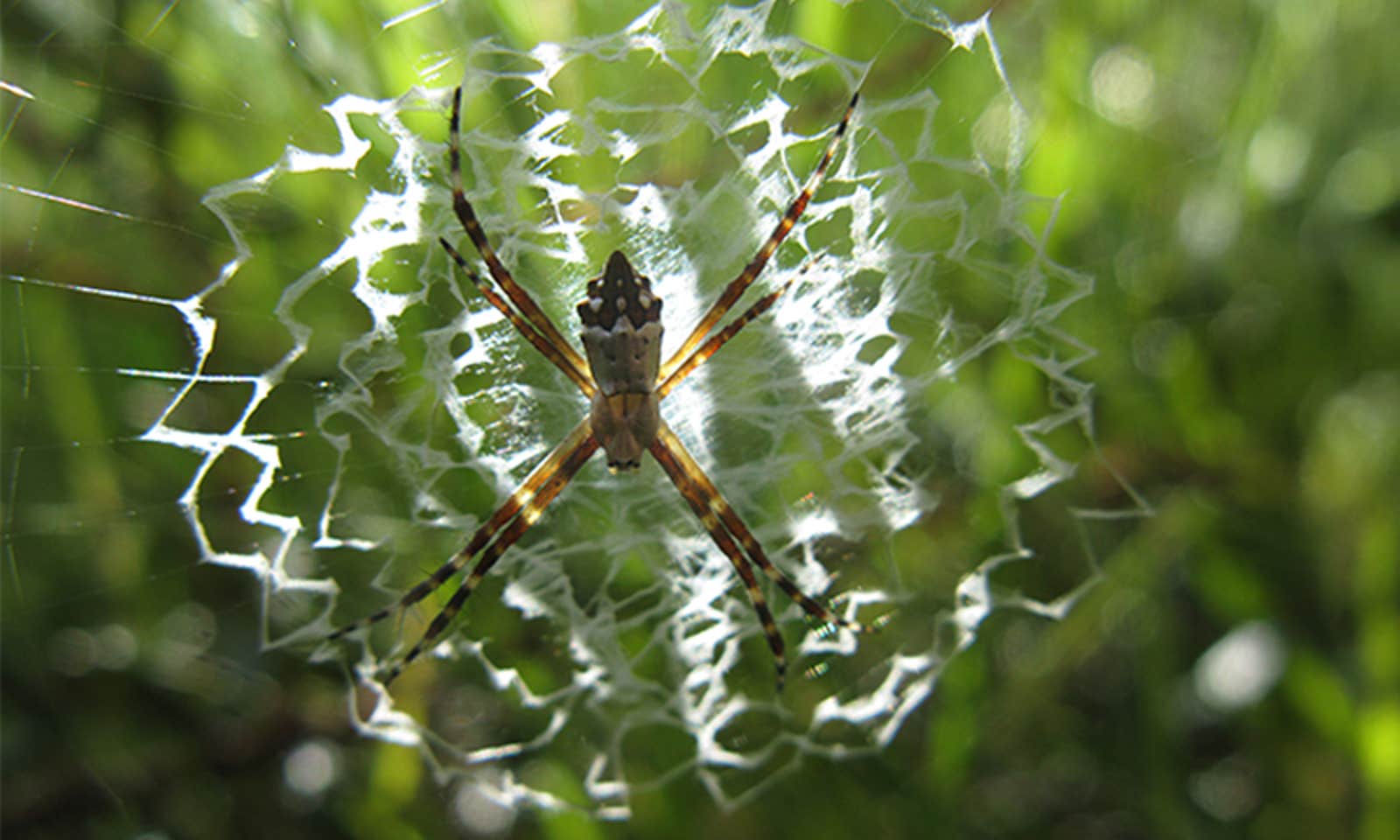Some spider species harbor a secret at the center of their webs—silken decorations called “stabilimenta” that can resemble anything from spiral doilies to zig-zagged X’s to intricate platforms, and more, depending on the species. (Think the “SOME PIG” advertisement in Charlotte’s Web.) These mysterious structures have captivated researchers for years, and though their primary function remains a mystery, several have sprung up.
Made from a silk that’s distinct from the ordinary web scaffolding surrounding them, stabilimenta reflect ultraviolet light, leading some scientists to suggest their function is primarily visual—dazzling prey or warding off low-flying birds. A new study suggests the function of at least some stabilimenta could be mechanical.
Read more: “These Spiders Kill with Their Vomit”
A team of researchers investigated stabilimenta by using a combination of field observations of yellow and black orb-weaver spiders (Argiope bruennichi) and computer simulations. After documenting the structures of the stabilimenta in the wild, the team then simulated them to determine how the presence of stabilimenta affects the transmission of vibrations from potential prey. Publishing in PLOS One, the team said that the stabilimenta can help transmit the elastic vibrations of prey anywhere in the web—possibly helping spiders locate prey—but only when the prey was moving parallel to the spiral web scaffolding.
It’s another piece in the puzzle of why spiders create these peculiar decorations, but with such a varied presence across a variety of species, there’s still more research to be done before we unravel this tangled web. ![]()
Enjoying Nautilus? Subscribe to our free newsletter.
Lead image: JonRichfield / Wikimedia Commons
































